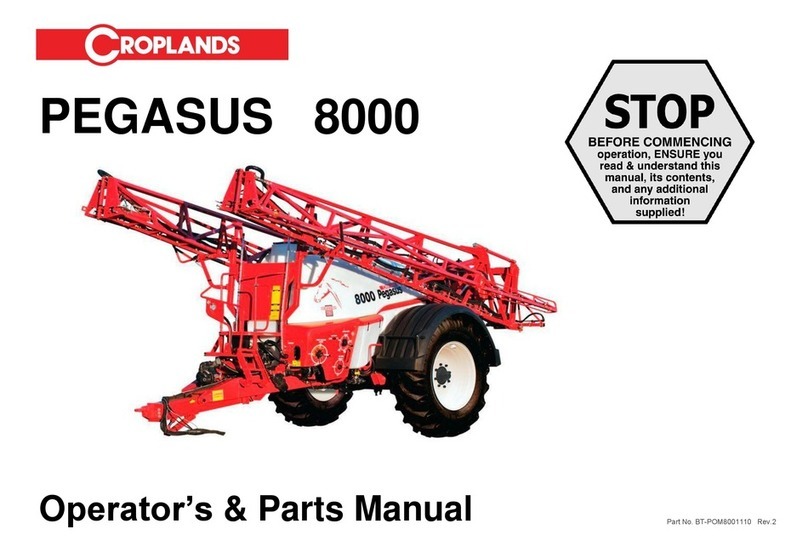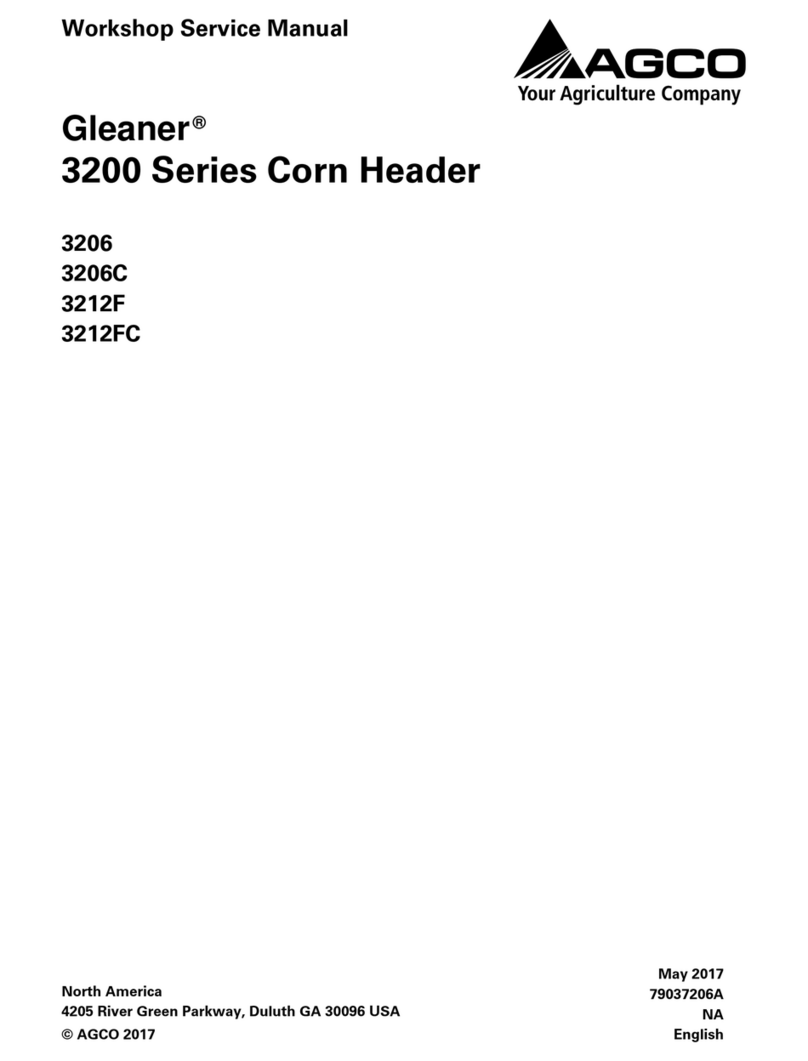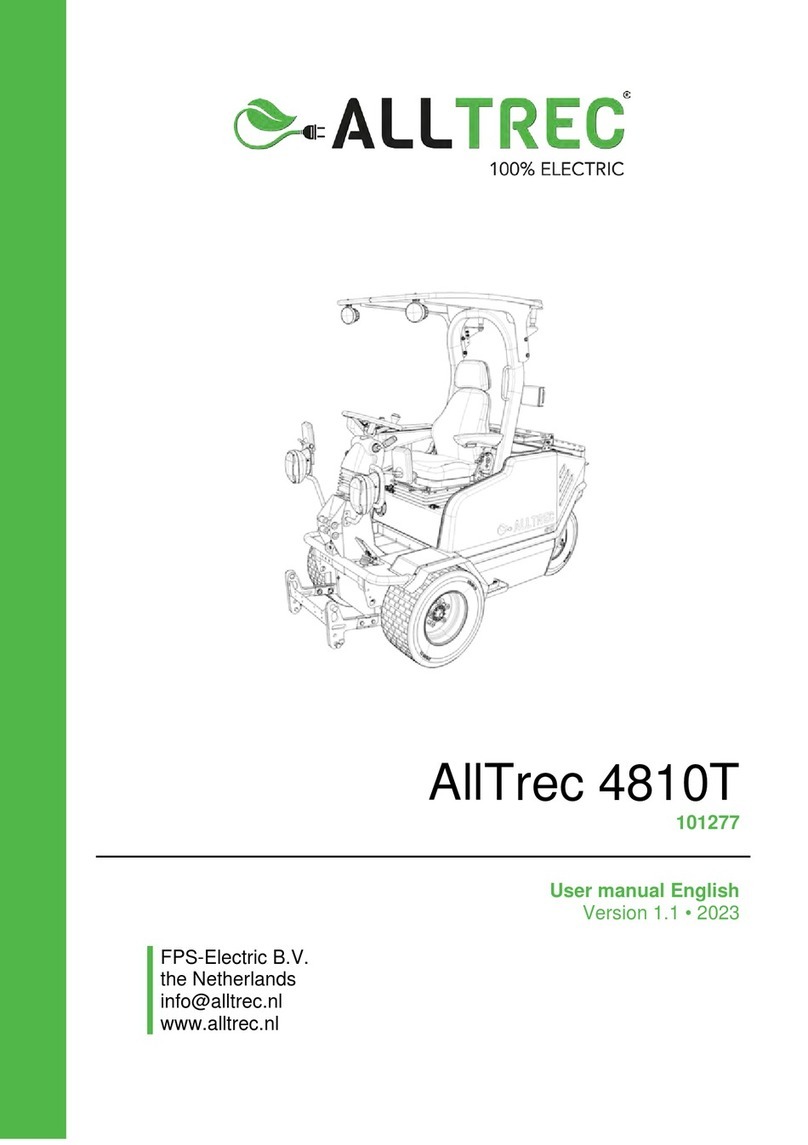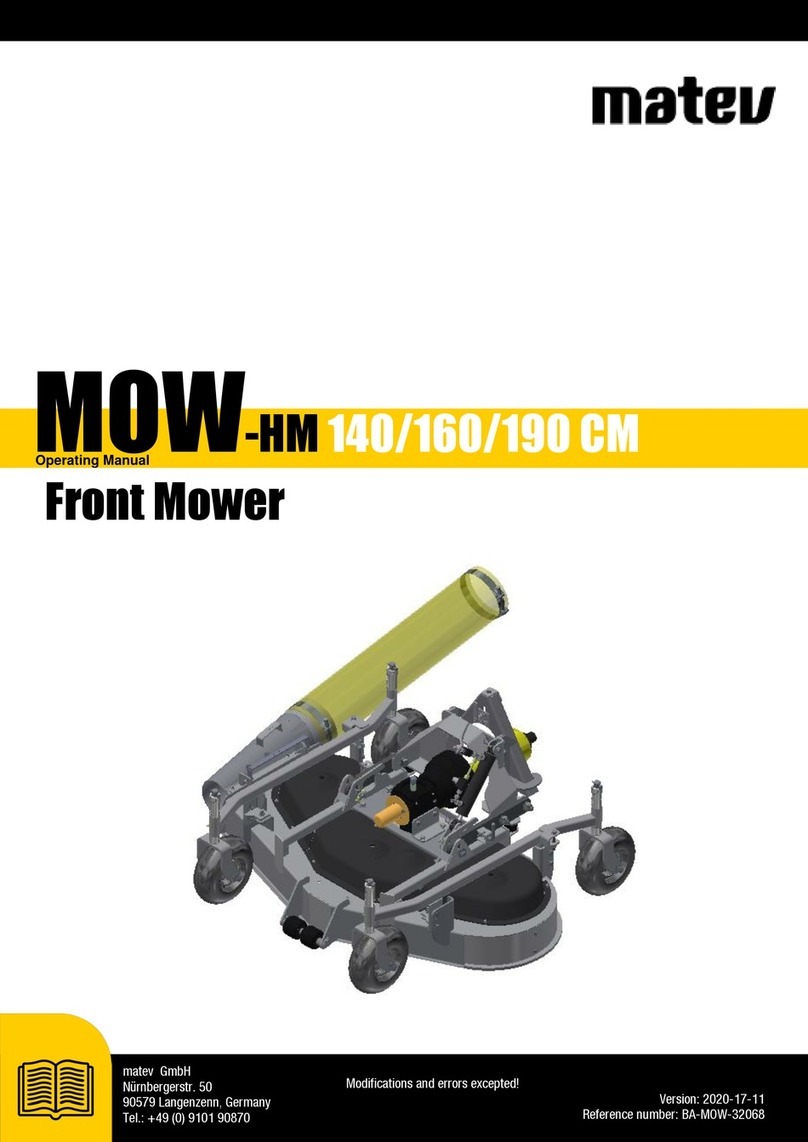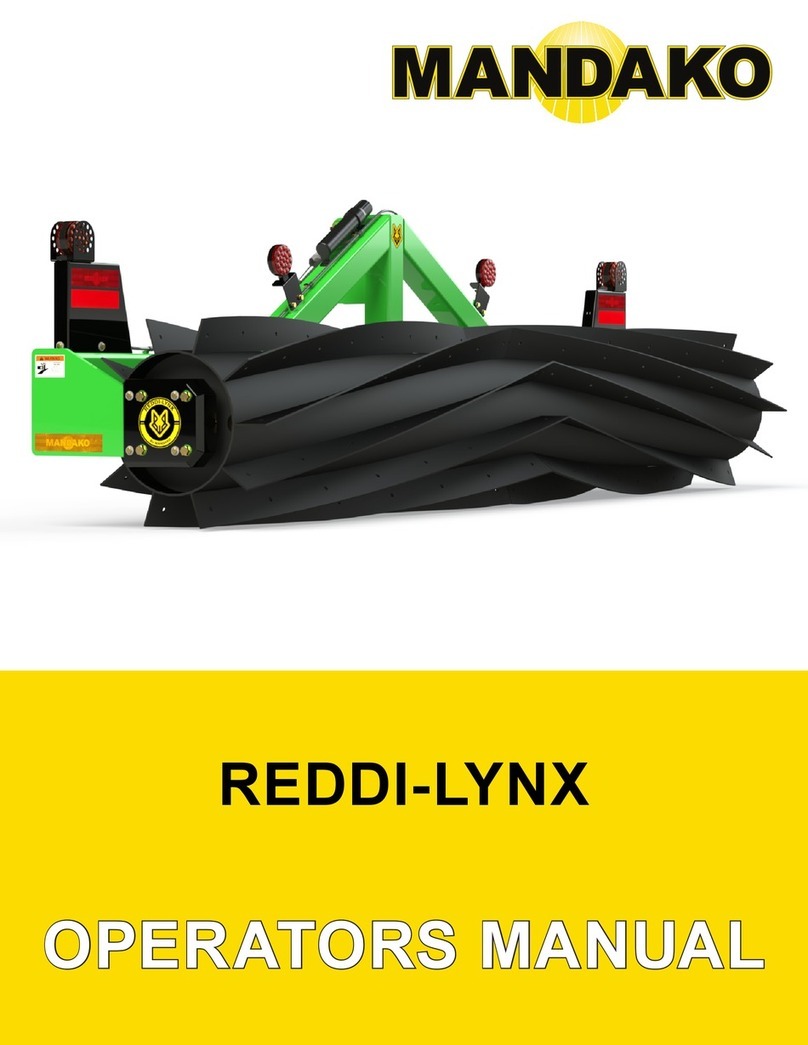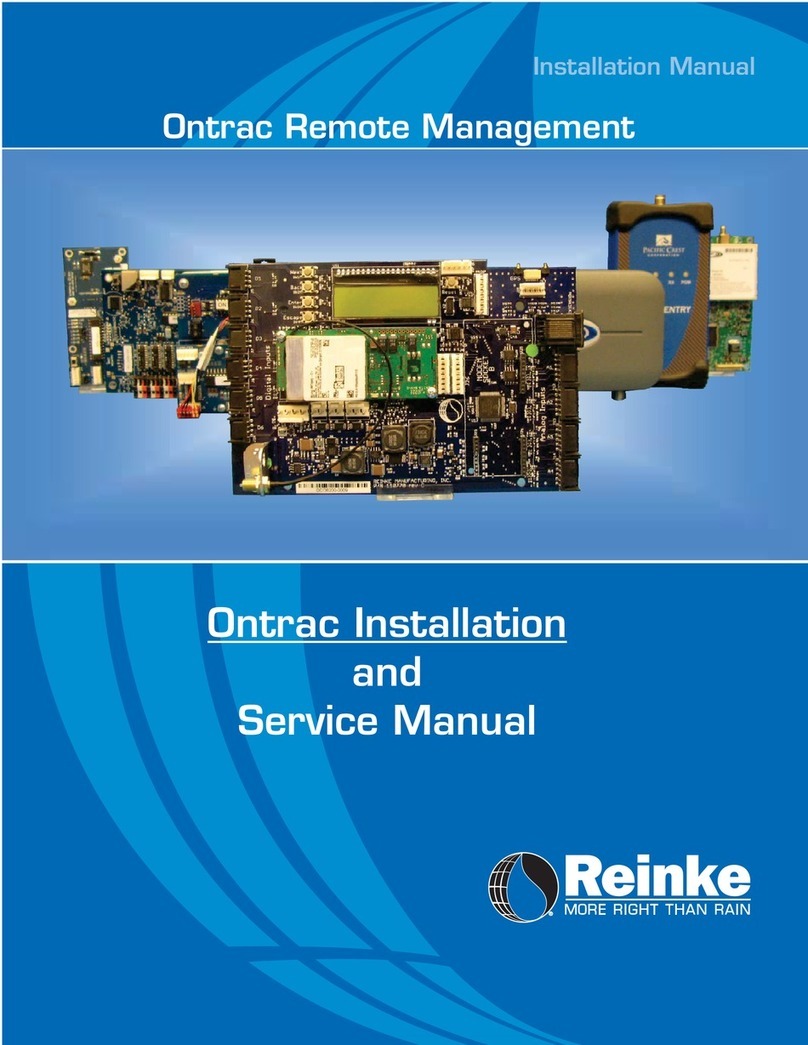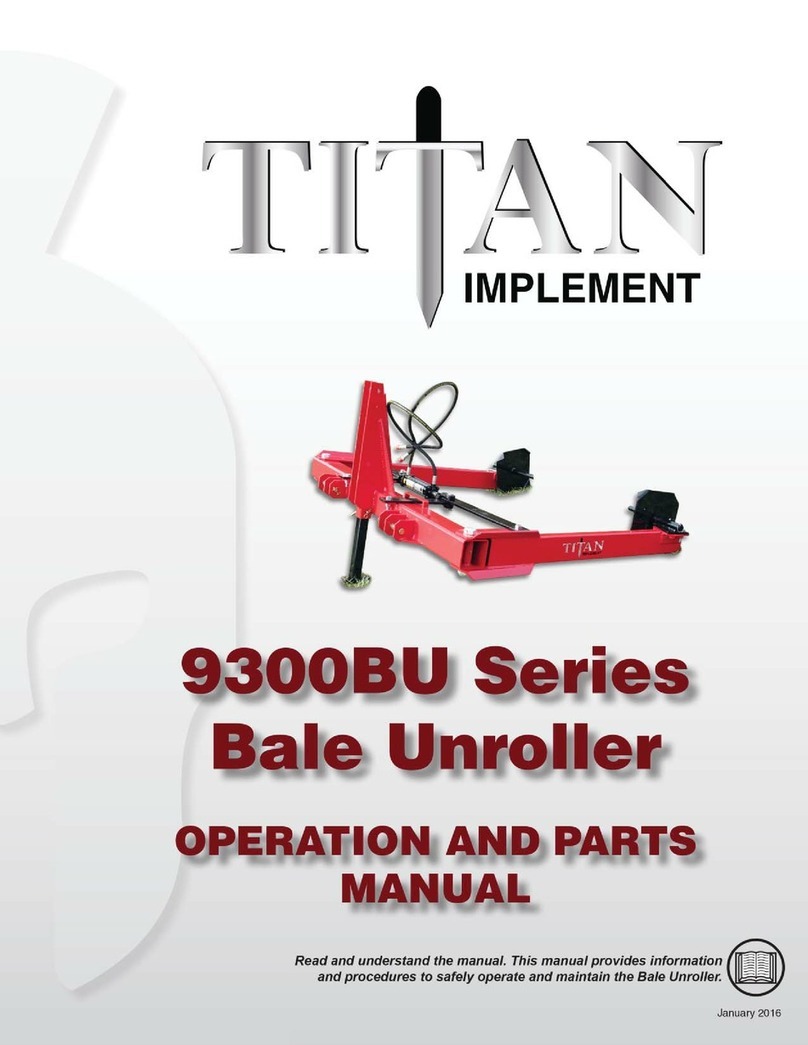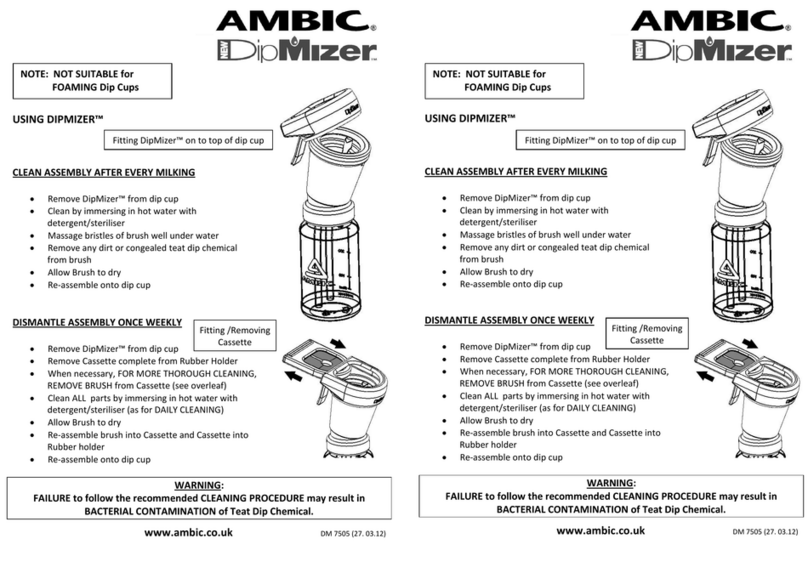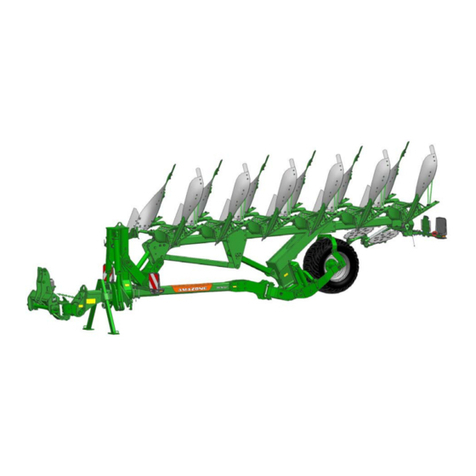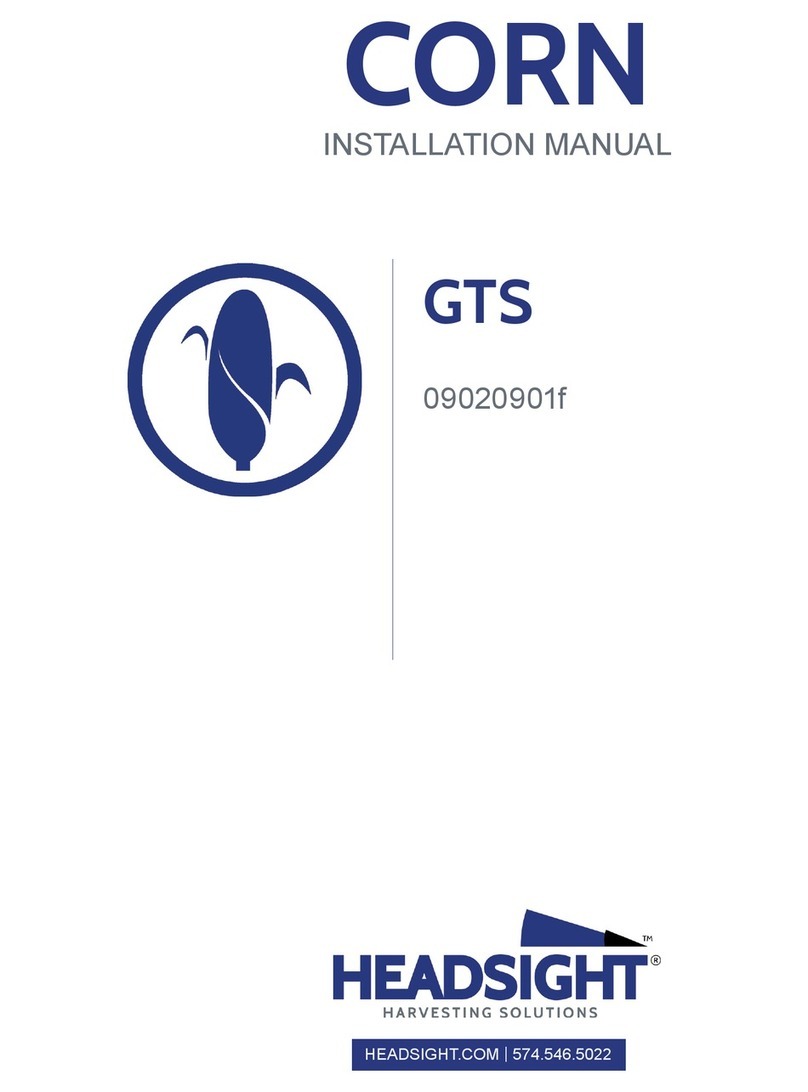Denon DP-S1 User manual

DENON
_.......
SERVICE
MANUAL
MODEL
DP-S1
CD
TRANSPORT
—
TABLE
OF
CONTENTS
—
OPERATING
INSTRUCTIONS
..00
0.00.0
cece
cece
cece
bbb
bbb
bbb
b
bebe
ecco.
2-11
SPECIFICATIONS:
S.i.2.5
Su
eeoine
dhs
Shacieolius
ad
Mie
4
elachigl
mipsel
5
desraeellon
tid
cod
SR
OE
At
seen
oe
che
aleacs
12
NOTE
FOR
HANDLING
OF
LASER
PICK-UP
.
00000
c
cece
ceva
bebe
cece
cee.
13,
14
DISASSEMBEY
3:25
cig
tag
So
tee
oN
a
akesste
des dow
a8
oP
Bk
mares
ohnekeae
ohchrbbadeini
oil
deve
skies
he
15
ADJUSTMENT
cis
fscsteiacid
sha
cay
Sa
Ghstandtadeiatowend
ad
uleon
oohe
oh
whoop
tegiatnntaser
chun
oen
16
~
22
SEMICONDUCTORS:
cccce
foie
hein
aie
dttatuiy
3
oo
Bagel
eae
'nicnn
cites
oe
Bete:
Chante
ee
23
~
29
PARTS
LIST
OF
PW.BOARD
....
0.00.0
b
bb
bbb
pcs
30
~
33
PARTS
LIST
OF
MECHANISM
UNIT
.
2...
cece
DU
srs
33
-
EXPLODED
VIEW
OF
MECHANISM
UNIT
«0...
c
cece
ccc
cece
ccbeceeeee.
33
PARTS
CISMOP
EXPLODED
MIBW
Ea
is
Piso.
CMa
eR
ets
We
ie
eh
ioe
On
Magee
Mt,
nth
Std
eect
ee
34
PARTS
LIST
OF
PACKING
&
ACCESSORIES...
60.
b
cece
eb
eb
ebeee
cece,
34
EXPLODED
VIEW!
at.
cscecte
gofsteaudd
wornccelen
baker
acted
ave
bola
dy
wale
Sd
once
tne
Sight
el
on
atte
Cite
fet
=
35
PWIBOARD.
¢
ihe.
cy8
02
kA use
teiy
hii
hh
Maurie
eet
eel.
ek
Ae
ec
RT
36,
37
WIRING
DIAGRAM
40%.
c55.83
iceriosren
pirat
aire
eolpale
ote
rsnstindy
Bocce
308
oh
iinet
is
dhe
eae
38
SCHEMATIC
DIAGRAM
fed
Jost
ene
vier
Sp
athe
ce
tc
ae
ie
bgt
ed
Vow
tian
adidas
See
Meer
eee
coeds
39,
40
NIPPON
COLUMBIA
CO.
LTD.
a

IMPORTANT
TO
SAFETY
WARNING:
TO
PREVENT
FIRE
OR
SHOCK
HAZARD,
DO
NOT
EXPOSE
TKS
APPLIANCE
TO
RAIN
OR
MOISTURE
CAUTION:
1.
Handle
the
power
supply
cord
carstully
Do
nat
damage
01
detorm
inc
power
supply
cord
Hf
it
1s
damaged
ar
detormed,
t
may
cause
alectrc
smock
of
Matiunction
when
used
When
tamoving
trom
wall
oullel,
De
sure
10
remove
by
holding
the
plug
attachment
and
noi
by
pulling
the
cord
2.
Deo
not
open
the
top
cover
1n
Ofder
to
prevent
etecinic
shock,
do
nol
open
tha
top
cover.
if
problems
occur,
contact
your
OENON
DEALER
3.
De
not
place
anything
inside
Do
not
place
metal
objects
oF
spill
NQuid
inside
Ihe
CO
tanspon
Electsic
shock
oF
malfunction
may
result
Please,
fecord
and
retain
(he
Madel
nama
ano
senal
number
of
your
set
shown
on
the
rating
labet
Model
No
DPS!
Serial
No
.
CAUTION:
TO
REDUCE
THE
AISK
OF
ELECTRIC
SHOCK,
DO
NOT
REMOVE
COVER
(OR
BACK),
NO
USEA
SERVICEABLE
PARTS
INSIDE.
REFER
SERVICING
TO
QUALIFIEO
SERVICE
PERSONNEL,
The
hghtany
flash
with
arrowhead
symbol,
within
an
equitalcral
(nangie,
1s
intended
to
alent
the
user
to
Nf,
the
presence
of
uninsulaled
“dangerous
voltage”
within
(he
product's
enciosure
that
may
be
of
sutcient
magnitude
to
consitute
a
ask
of
electric
shock
le
persons
The
exclamation
port
within
an
equilateral
trangte
is
inlendud
10
ale
the
user
to
the
presence
of
important
operating
and
Maintenance
(servicing!
instructiuns
in
the
Inecature
accompanying
the ap-
plunce
CLASS
1
LASER
PROOUCT
LUOKAN
1
LASERLAITE
KLAS§
1
LASERAPPARAT
“CLASS
1
LASER
PRODUCT”
AOVARSEL:
—-
USYNUG
LABEASTAALING
VEO
AmrinG.
NAR
SMAERIROSAFOAYORRE
EA
VDE
AF
FUR
TOW.
UNDGA
UOSAETTELSE
FOR
STRALING
VAROITUBS
«—
LALTTEEN
KAVTTAMINEN
MULALA
KUM
TABBA
MAYITOONJEERSA
MAIMATLALA
TAVALLA
SAATI
OS
ALTIBYAA
GAYTTAJAN
TURVALLIBUUSCUORAN
U
YAITTAVALLE
WAKYMATTOMALLE
LASEABATEM
YUE
Vanni
OM
APPARATEN
ANVANDS
PA
ANMAT
BATT
AN
|
DENGA
BAUKSAMVISNING
SPECIICERATS,
KAM
ANVANOAREN
UTSATTAS
POR
OSYMLKG
LASEASTAALARNG
SOM
OVEMSARIOER
GRAMEEN
FOK
LASEAALASS
1
NOTE
This
CO
wansport
uses
the
semiconductor
lesar
Tu
stiow
you
lo
enjoy
music
B12
Sable
Operation,
it
1s
recommended
[0
Use
tng
1m
a
room
ot
$C
441°F)
-
35°C
(95°F)
LABELS
(for
U.S.A.
model
only)
antec
acean
ime
reuma)
Cnah
win
Get
mate
pe
womcmnetta
7
encom
ae
me
ene
octane
Al
AP
An
ENT
A
SPO
CAUTION:
USE
OF
CONTAOLS
OR
ADJUSTMENTS
OR
REFORMANCE
OF
PROCE-
OURES
OTHER
THAN
THOSE
SPECWIED
HEALIN
MAY
RESULT
IN
HAZARDOUS
RADIATION
EXPOSURE
THE
CO
TRANSPORT
PLAYER
SHOULD
NOT
BE
ADJUSTED
OR
REPAIRED
BY
ANYONE
EXCEPT
PROPERLY
QUALIFIED
SEAVICE
PERSONNEL
NOTE
This
unit
may
Cause
mlestarence
10
Fadio
and
islavisian
recepuon
it
yuu
do
Nol
opurate
Win
stact
accordance
with
Ins
OPERATING
INSTRUCTIONS
This
unit
complies
with
Class
B
computing
device
rules
in
accord
ance
with
the
speciications
in
Sub-part
J
or
Pan
45
of
ine
FCC
Rules.
which
are
designad
to
provide
reasonaDia
pratechon
against
Buch
intederence
wn
a
fesidential
insiaiiaiion.
Hf
the
unit
does
Cause
intolerance
to
any
(ado
oF
television
reception,
iry
10
feduce
Ht
by
one
o
more
of
the
following
means
a)
Ture
the
other
unit
lo
improve
feception
b)
Move
thie
unit
c)
Move
this
und
away
from
others
a}
Pig
this
von
respactivaty
«nto
@
dillacant
AC
ouitct
"This
is
note
in
accordance
with
Section
15.838
of
the
FCC
Kules
{IMPORTANT
(BRITISH
MODEL
ONLY}
The
wires
in
this
mains
toad
are
coloured
in
accosdance
with
the
follawing
code:
Blue:
Neutral
Brown:
Live
The
cutours
of
the
wires
in
the
mains
lead
of
Ihis
apparatus
May
Hot
corraspond
with
ihe
coloured
markings
identtying
Ihe
termusais
in
your
plug
proceed
as
lollows
The
wire
which
1s
coloured
blue
must
be
connected
ta
the
terminal
wich
ss
marked
with
the
fetter
N
ar
colaured
Diack
The
wie
which
is
coloured
brown
must
be
cannecied
to
the
lertune!
which
1s
Marked
with
the
lteter
t
06
coloured
test
6A.
10.
VW.
SAFETY
INSTRUCTIONS
Read
Instructions
-—
All
the
safety
and
operating
instructions
should
be
read
before
the
appliance
is
operated.
Retain
Instructions
-
The
safety
and
operating
instructions
shoutd
be
retained
for
futuce
reference
Heed
Warnings
~
All
warnings
on
the
apphance
and
in
the
operating
instructions
should
be
adhered
10
Follow
Instructions
-
All
operating
and
use
instruc:
tions
should
be
followed.
Water
and
Moisture
-
Tha
appliance
hould
not
be
used
near
water
-
for
example,
near
a
bathtub,
washbowl,
kitchen
sink,
laundry
tub,
in
a
wet
basement,
or
near
8
swimming
pool,
and
the
lke
Carts
and
Stands
-
The
appliance
should
be
used
only
with
8
cart
of
stand
that
is
recommended
by
the
manutacturer.
An
appliance
and
cart
combination
should
be
moved
with
care.
Quick
stops,
excessive
force,
and
uneven
mal
surfaces
may
cause
~———_
the
appliance
and
cart
combination
to
overturn
Wall
or
Ceiling
Mounting
-
The
apphance
should
be
mounted
to
a
wall
of
ceiling
only
as
recommended
by
the
manufacturer,
Ventitation
-
The
appliance
should
be
situated
so
that
its
location
or
position
does
not
intestere
with
as
proper
ventilation.
For
example,
the
appliance
shoutd
not
be
situated
on
a
bed,
sofa,
rug,
of
similar
surface
that
may
block
the
ventilation
openings,
oF,
Placed
in
a
built-in
installation,
such
as
a
bookcase
or
cabinai
thal
may
impede
the
flow
of
au
through
the
ventilation
openings.
Heat
-
The appliance
should
be
situated
away
from
heat
sources
such
as
fadiators,
heat
registers,
stoves,
of
other
appliances
{including
amplifiers)
that
produce
heat.
Power
Sources
-
The
appliance
should
be
connected
10
@
power
supply
only
of
the
type
descebed
in
the
Operating
instructions
Of
as
marked
on
the
ap-
pliance.
Grounding
of
Polanzation
~
Precautions
should
be
taken
so
that
the
grounding
of
potanizalion
means
uf
an
appliance
1s
not
defeated
cue
a
CRAMP
OE
ANTENA
GROUND
A$
PHA
mATOMAL
deactaca
COOL
12
4
15.
16
7
1B
20
Powes-Card
Protection
~
Powersupply
cords
should
be
routed
so
thal
(hey
are
not
lhely
to
De
waiked
on
or
pinched
by
stems
placed
upon
of
against
them,
paying
particular
attention
lo
cords
al
plugs.
con
ventence
receptacles,
and
the
point
where
they
exit
from
the
apphance
Cleamng
-
The
appliance
stiould
be
cleaned
only
as
recommended
by
(ne
manutactuser
Power
Lines
-
An
outdoor
antenna
shouil
be
tocated
away
trom
power
lines
Outdoor
Antenna
Grounding
—
Hf
an
outside
antenna
#$
connected
to
the
receiver,
be
sure
the
amenna
system
is
grounded
so
as
to
provide
sume
protec:
tion
against
voltage
surges
and
built-up
static
charges.
Article
810
of
the
National
Electrical
Code,
ANSI/NFPA
70,
provides
information
with
regard
lo
proper
grounding
af
the
mast
and
supporting
struc:
ture,
grounding
of
the
lead-in
wire
to
an
antenna:
discharge
unit.
size
of
grounding
conusctors,
loca-
tion
of
antenna
discharge
unl,
connection
to
grounding
electrodes,
and
requiements
for
the
grounding
electrode.
See
Figure
A
Nanuse
Periods
~
The
power
cord
of
(he
apphance
should
be
unptugged
from
the
outici
when
left
unused
for
a
long
penod
of
time
Object
and
Liquid
Entry
~
Care
should
be
taken
so
that
objects
do
not
fall
and
tiquids
are
nut
spitled
into
the
enclosure
through
openings.
Damage
Requiing
Service
-
The
appiance
shoutd
be
serviced
by
qualified
service
personnel
when:
A.
The
power-supply
cord
of
the
plug
has
been
damaged,
of
8B
Objects
have
fallen,
of
hquid
has
been
spilled
into
the
appliance,
oF
C
The
apphance
has
been
exposed
(6
rain,
of
The
apphance
does
not
appear
to
operate
normal:
ty
or
exhibits
4
marked
Change
in
perlormance,
or
€
The
apphance
has
been
dropped,
of
ine
enclosure
damaged
Servicing
-
The
user
should
not
atlerpt
to
service
the
apphance
beyond
that
described
wn
the
operating
instructions
AH
alher
servicing
should
Le
referred
to
yualbhed
service
personne.
LS'-dO
mE

NOTE
ON
USE/OBSERVATIONS
RELATIVES
A
L’UTILISATION/NOTAS
SOBRE
EL
uso
©
Avoid
high
temperatures
Allow:
tor
sufficient
heat
dispersion
when
instailed
on
a
rack,
Eviter
des
températures
élevees
Tenir
compte
d'une
dispersion
de
chaleur
suffisante
lors
de
installa.
tion
sur
une
élagére
Evite
altas
temperaturas
Permite
ta
suficiente
dispersidn
del
calor
cuando
esté
instalado
en
ta
consols
©
Handle
the
power
cord
caretully
Hold
tha
plug
when
unplugging
the
cord.
*
Maniputer
te
cordon
d'atimentation
avec
précaution
Tenir
ta
prise
tors
du
débranche-
ment
du
cordon.
*
Maneje
el
cordén
de
enargis
con
curdado.
Sostengs
ef
enchule
cuando
de
sconecte
el
cordon
de
energia
«
Keep
the
set
tree
from
moisture,
water,
and
dust
©
Protéger
tappareil
contre
'humidi-
té,
Feau
et
ta
poussiére.
*
Mantenga
el
equipo
tibre
de
hume-
Gad,
agus
y
potvo.
&
o
*
Unptug
the
power
cord
when
not
using
the
set
for
tong
periods
of
time
©
Débrancher
te
cordon
d'slimenta-
tion
lorsque
Vappareil
n'est
pas
utilisé
pendant
de
tongues
Otriodes
*
Desconecte
ef
cordén
de
energia
cuando
no
ulilice
@!
equipo
por
mucho
tiempo
Do
not
let
foreign
objects
in
the
set,
Ne
pas
taisser
des
objets
dirangers
dans
l'appareil.
No
deje
odjetos
extratos
dentro
del
equipo.
Do
not
let
insecticides,
benzene,
and
thinner
come
in
contect
with
the
set.
Ne
pas
mettre
en
contact
des
insec-
licides,
du
benréne
et
un
diluant
avec
l'appareil
No
permita
el
contacto
de
insectici-
das.
gasolina
y
diluyentes
con
el
equipo.
“(For
sets
with
ventilation
holes}
*
Oo
not
obstruct
the
ventilation
holes
*
Ne
pas
obstruer
tes
trous
d'adra-
on.
*
No
obstruya
los
orificios
de
ventila.
con
J
©
a
Nevat
disassemble
or
modify
the
set
in
any
way
Ne
jamais
démonter
ou
modifier
Vappared
dune
maniére
ov
d'une
aulre
We
greatly
appreciate
your
purchase
of
this
Denon
product.
To
ensure
that
you
take
fullest
advantage
of
your
CD
transport,
read
these
instructions
caretully
before
using
the
unit
and
be
sure
to
always
operate
it
property.
After
reading
these
instructions,
be
sure
to
keep
them
for
future
reference
should
questions
or
probiems
arise.
—
TABLE
OF
CONTENTS
—
FEATURES
INSTALLATION
PRECAUTIONS
.
THE
COMPACT
DISC
NAMES
AND
FUNCTIONS
OF
PARTS
CONNECTIONS
OPENING
AND
CLOSING
THE
DOOR
AND
LOADING
DISCS
NORMAL
CO
PLAYBACK
............
ADVANCED
CD
PLAYBACK
TIMER-CONTROLLED
PLAYBACK.
PLAYBACK
USING
THE
REMOTE
CONTROL
UNIT
TROUBLESHOOTING
SPECIFICATIONS
..
Please
check
to
make
sure
the
following
items
are
included
with
the
main
unit
in
the
carton:
(1)
Operating
Instructions
(2)
Connection
Cord
(3)
Remote
Control
Unit
RC-248
.
(4)
Remote
Control!
Unit
Case
.....
(5)
RO3
AAA
Dry
Cell
Battery
.
(6)
Stabilizer
(7)
Stabilizer
Case
Hen
oew
on
IMPORTANT
{CANADIAN
MODEL
ONLY)
This
digital
apparatus
does
not
exceed
the
Class
8
fimits
for
radio
noise
emissions
from
digital
apparatus
setout
in
the
Radio
Interference
Regulations
of
the
Canadian
Department
of
Communication.
+
Line
Voltage
Selection
(for
multiple
voltage
models
only)
*
Be
sure
to
check
that
the
voltage
selector
on
the
rear
panal
is
set
to
the
Proper
voltage
if
not,
contact
your
store
of
purchase.
vou
aot
Never
remove
screws
or
try
to
switch
the
voltage
selector
on
your
own
SELECTOR
a=
*«
FOR
U.S.A.
&
CANADA
MODEL
ONLY
MENT
CAUTION
¢
POUR
LES
MODELES
AMERICAINS
ET
CANADIENS
UNIQUE.
TO
PREVENT
ELECTRIC
SHOCK
DO
NOT
USE
THIS
(POLA.
ATTENTION
RIZED}
PLUG
WITH
AN
EXTENSION
CORD,
RECEPTACLE
OR
OTHER
OUTLET
UNLESS
THE
BLADES
CAN
BE
FULLY
INSERTED
TO
PREVENT
BLADE
EXPOSURE
POUR
PREVENIR
LES
CHOCS
ELECTRIOUES
NE
PAS
UTILISER
CETTE
FICHE
POLARISEE
AVEC
UN
PROLONGA
TEUR
UNE
PRISE
DE
COURANT
OU
UNE
AUTRE
SORTIE
J
OE
COURANT,
SAUF
SI
LES
LAMES
PEUVENT
ETRE
INSEREES
A
FOND
SANS
EN
LAISSER
AUCUNE
PARTIE
A
DECOUVERT
Nunca
desarme
o
modifique
et
equipo
de
ninguna
manera
A.
©
Sn
order
ta
make
operation
more
easily
understandable
the
tHustrations
used
in
these
instructions
differ
slightly
in
places
with
the
actual
product
—LS-da
i
a
TI
as
Nh
ORIN
NE
Sen
aA
Paras
OE
APE
ONE
2
EAE
OT
GTN
I
a

FEATURES
The
DP-S?
is
a
top
quality
CD
transport
developed
based:on
a
policy
of
fully
eliminating
vibration
and
resonance
within
an
innovative
design.
Vibration
and
resonance
are
eliminated
through
a
newly
developed
pickup
mechanism,
a
large
stabilizer,
triple-Jayer
flotation,
and
a
frame
design
which
keeps
the
influence
of
external acoustic
pressure
to
the
absolute
minimum,
The
OP-S1
provides
five
types
of
digital
outputs
and
an
ultra
high-speed
synchronous
optical
tink
(ST-GEN
LOCK)
for
ultimate
synchronized
driving.
(1)
(2)
(3)
(4)
Newly
developed
pickup
mechanism
unit
1.
A
strong
cast
aluminum
pickup
base
thoroughly
eliminates
extraneous
vibration.
2.
A
high
torque
motor
provides
accurate,
extremely
smooth
rotation,
minimizing
jitter.
In
addition,
the
self-centering
stainless
stee!
turntable
is
driven
with
an
ultra-thick
spindle
shaft
(6mm
in
diameter),
and
a
very
hard,
low
friction
ruby
(5mm
in
diameter)
is
used
for
the
bearing,
providing
outstandingly
high
endurance.
3.
The
opening
of
the
disc
loading
section
is
air-shielded
with
a
special
rubber
material
to
suppress
the
effect
of
air
vibration
entering
through
gaps,
greatly
improving
the
airtightness
of
the
pickup
mechanism.
Extremely
stable
disc
playback
thanks
to
a
large
stabilizer
(included)
1.
The
stabilizer
holds
the
disc
down
to
correct
any
warping
in
the
disc
and
prevent
jitter
during
signal
readout.
2.
The
stabilizer
also
thoroughly
suppresses
any
resonance
in
the
disc
itself.
3.
The
moment
of
inertia
generated
by
the
stabilizer,
which
is
heavier
than
the
disc,
creates
extremely
stable
rotation
and
improves
the
readout
jitter
margin.
Thorough
anti-resonant
construction
1.
The
large
insulator
absorbs
vibrations
from
the
Noor
through.a
combination
of
aluminum
and
sintered
alloy.
2,
The
mechanism
base
which
supports
the
pickup
mechanism
is
floated
from
the
frame
with
elastic
tubber.
3.
The
pickup
mechanism
is
itself
floated
with
an
oil
damper
and
spring.
This
Triple
Floating
Mechanism
structure
shuts
out
external
vibration
to
provide
playback
with
excellent
vibration
resistance.
4.
The
highly
rigid
pickup
mechanism
is
placed
at
the
center
where
it
is
least
likely
to
be
affected
by
external
vibration.
This
also
makes
for
excellent
weight
distribution.
5.
The
heavyweight
chassis
and
low
center
of
gravity
create
an
ideal
non-resonant
design.
6.
The
design
makes
use
of
spherical
surfaces
and
radial
forms
to
keep
the
influence
of
external
acoustic
pressure
to
a
minimum.
Synchronized
driving
with
an
ultra
high
speed
synchronized
optical
link
(ST-GEN
LOCK)
1.
The
speed
at
which
data
transfer
is
a
very
rapid
50
Mbit/sec,
nearly
10
times
that
of
conventional
optical
links
(6
Mbit/sec}.
This
virtually
eliminates
transmission
distortion
due
to
signal
delay
(jitter).
2.
The
D/A
converter
master
clack
is
synchronized
with
the
CD
Transport
clock,
improving
clock
precision
and
suppressing
jitter.
3.
The
AT&T
ST-Link™
system
is
used
for
the
interface,
allowing
direct
one-way
connection
to
high
quatity
foreign-made
D/A
converters,
INSTALLATION
PRECAUTIONS
Ifthe
DP-S#
or
other
electrome
equipment
using
microprocessors
is
used
at
the
same
time
as
a
tuner
of
TV,
norse
or
disturbance
may
de
produced
in
the
sound
or
picture
on
the
tuner
or
TV.
If
this
should
happen,
piease
take
the
following
measures
*
Keep
the
DP-S1
as
far
away
from
the
tuner
or
TV
set
as
possible.
©
Keep
the
power
cable
and
connecting
cables
of
the
OP-S1
separate
trom
the
antenna
wires
of
the
tuner
and
TV.
©
Interference
is
particutarty
likely
to
occur
when
an
indoor
antenna
or
8
300-ohm
feeder
cable
is
used
~
us.
use
of
an
outdoor
antenna
and
75-ohm
coaxial
cable
is
strongly
recom
mended.
300-ohm
feeder
cadis
7$-ahm
coaxiat
cedle
*
Norse
may
be
heard
in
AM
or
FM
broadcasts
if
the
DP.S1
is
turned
on
while
listening
to
AM
or
FM
broadcasts.
if
this
happens,
turn
the
OP-S1's
power
off
*
Humming
may
occur
if
the
DPS)
is
installed
near
a
TV
or
other
audio
component
or
if
ther
connection
cords
are
nearby
if
this
happens,
try
setting
the
components
or
ther
connection
cords
1A
a
different
position
*
Always
remove
discs
whan
moving
the
OPS)
Discs
may
be
damaged
if
teft
in
the
OP
St}
*
Do
not
insert
any
objects
other
than
discs
in
the
disc
insertion
stot,
as
this
may
damage
the
OPS!
*
Do
not
move
the
OP-S1
suddenly
from
a
cold
place
lo
a
warm
one
I
this
ts
done,
water
droplets
(condensation)
may
form
on
the
lens,
in
which
case
the
OP-S1
will
not
operate
properly.
If
this
happens,
wart
30
minutes
before
using
the
DP-S1
THE
COMPACT
DISC
2
Onty
use
dises
containing
the
mark
shown
at
the
right
on
the
OP-S1.
COMPACT
The
disc's
speed
of
rotation
may
change
ose
greatly
of
the
sound
may
decrnase
if
the
OP-S1
is
subject
to
strong
shocks
during
DIGITAL
AUDIO
playback
of
searching,
bul
this
is
not
a
mal.
function.
Only
use
discs
which
asxctusively
contain
audio
signals
An
electrical
discharge
due
to
static
electricity
may
be
produced
between
the
pin
and
your
finger
of
any
ather
part
of
your
body
it
it
1s
placed
near
the
turntable
pin
whan
the
room
is
dry
and
your
body
ts
charged
with
static
electricity
IHihts
happens,
the
pickup
may
move
slowly
from
the
inside
of
the
disc
towards
the
outside
In
this
case.
press
the
OPEN/
CLOSE
button
to
close
the
door
then
open
it
back
up
The
pickup
will
ceturn
to
the
inside
of
the
disc
and
Ihe
OP.S1
wilt
now
operate
normally
A
metallic
click
may
be
heard
when
playback
+s
staried
after
the
stabilizer
is
placed
on
the
disc
This
ts
the
sound
of
the
pin
in
the
stabiliver
which
pravents
the
stabilizer
from
slipning
entering
ihe
guide
pin
groove,
and
1s
not
a
malfunction
A
special
shee!
is
attached
10
Ihe
bottom
of
the
stabitizer
to
improve
conlect
between
the
stabilizer
and
the
disc
When
the
Stabrhzer
«is
placed
on
the
disc,
this
special
sheet
strongly
adheres
to
the
dise
MW
the
stabitvver
ss
lifted
suddenty,
the
disc
May
stick
to
the
sheet,
htt
olf
the
turntable,
then
fall
and
be
scratched
Thus,
always
«emove
the
stabilizer
slowly
Ltting
et
Strarght
up
4
1.
Precautions
on
handling
compact
dises
*
Do
not
atlow
fingerprints,
oi!
or
dust
on
the
surface
of
the
compact
disc.
If
the
signat
surface
is
dirty,
wipe
it
off
with
»
solt.
dry
cloth
Wipe
in
circular
motions
from
the
center
and
oul
"
*
Do
not
use
water.
benzene.
thinner,
record
sprays,
elec
trostatic
proof
chemicals,
or
sittcone-treated
cloth
to
clean
discs
:
f
:
*
Always
use
care
when
handling
discs
to
prevent
damaging
the
surface,
in
particular
when
removing
a
dise
from
the
case
and
relurming
it
*¢
Do
not
bend
compact
discs
5
*
Do
sot
apply
heat
to
compact
discs
‘
i
Z
*
Do
not
entarge
the
hole
mn
the
center
of
thé
disc
*
Do
not
write
on
the
disc
and
do
nol
attach
any
labels
©
Condensation
will
form
on
the
disc
surface
if
it
is
brought
into
a
wary
room
trom
a
cold
area,
such
as
ouldoors
dunng
winter
Wait
until
the
condensation
disappears
Never
dry
discs
with
haw
dryers.
ete
‘
if
Precautions
on
storage
e
After
playing
a
disc,
always
return
it
to
its
case
¢
Keep
discs
in
the
cases
when
they
are
ndt
to
be
played.
This
‘will
protect
them
from
dust
and
dirt
and
prolong
their
service
life
*|
Do
not
store
dises
in
the
following
places
1)
Places
exposed
to
direct
sunmight
for
a
considerable
ume
(2)
Places
subject
to
accumulation
of
dust
or
high
humidity
3)
Places
exposed
to
high
temperatures,
such
as
close
to
heater
outlets
fe
i
o
-

Lat
NAMES
AND
FUNCTIONS
OF
PARTS
..._.....
Power
Switch
(POWER)
@
Press
this
to
turn
on
the
power
of
the
OP-S1
@
When
the
power
turns
on,“
00
”
appears
on
the
TRACK
section
of
the
display,
and
if
no
disc
is
loaded,
“00
00100
00"
appears
on
the
dispiay
after
several
seconds.
If
a
disc
is
loaded
and
the
door
is
closed,
after
several
seconds
the
total
number
of
tracks
on
the
disc
appears
on
the
TRACK
disptay,
and
the
total
time
of
the
disc
appears
on
the
TIME
display
Door
@
This
is
where
the
disc
is
loaded
e
Use
the
OPEN/CLOSE
button
to
open
and
close
the
door.
@
The
door
can
also
he
closed
by
pressing
the
Play
button
Door
OPEN/CLOSE
Button
(OPEN/CLOSE)
e
Press
this
to
open
and
close
the
door
e
Press
one
to
open
the
door,
again
to
close
it
e
Ia
disc
is
toaded
when
the
door
is
closed,
the
disc
lurns
for
several
seconds
then
slons,
and
the
total
number
of
tracks
and
total
playing
time
of
the
disc
appear
on
the
display
Display
©
Information
such
as
the
track
number,
index
number,
and
playing
time
is
displayed
here
TRACK
display
INDEX
daplay
TIME
display
Jes
8898
88:88
|
op
eet
|
PLAY
indicator
indientor
PAUSE
wmchealor
—
PROGRAM
indicator
Remote
Control
Sensor
«
This
is
where
the
signats
from
the
remote
control
unit
are
received.
@
Point
the
remote
controf
unit
(RC-248)
at
this
sensor
when
operating
it.
Play
Button
(PLAY)
©
Press
this
to
play
the
disc.
When
pressed,
the
(
PLAY}
indicator
appears.
and
the
number
of
the
track
currently
playing,
the
index
number,
and
the
elapsed
playing
time
are
displayed.
©
Once
the
tast
track
is
played,
the
CR
PLAY)
indicator
turns
off
and
the
stop
mode
is
set.
Stop
Button
{STOP)
@
Press
this
to
stop
playback.
«
When
pressed,
the
disc
stops
turning,
the
total
number
of
tracks
on
the
disc
appears
on
the
TRACK
display,
and
the
total
playing
time
appears
on
the
TIME
display
®
During
programmed
playback,
the
total
number
of
programmed
tracks
and
the
total
programmed
playing
time
are
displayed.
Automatic
Search
Reverse
Button
(
He
}
«
Press
this
button
to
move
the
disc
back
to
the
beginning
of
previous
tracks
@
When
pressed
in
the
play
or
pause
modes,
the
disc
is
moved
back
by
a
number
of
tracks
equal
to
the
number
of
times
the
button
is
pressed.
Automatic
Search
Forward
Button
{
DH
)
«
Press
this
button
to
move
the
disc
forward
to
the
beginning
of
subsequent
tracks
«
When
pressed
in
the
play
or
pause
modes,
the
disc
is
moved
forward
by
a
number
of
tracks
equal
to
the
number
of
times
the
button
is
pressed
Continuous
button
operation
When
buttons
@
ar
©
are
held
in,
the
number
of
tracks
changes
continuously
oO
=
Sh
a
a

10
Digital
Output
Jack
{OPTICAL-ST)
@
Digital
data
is
output
in
optical
form
from
this
jack
©
Use
an
ST-Link™
optical
fiber
cable
for
connec:
tion.
Digital
Output
Jacks
{OPTICAL-TOS-1
and
TOS-2)
e
Digital
data
is
output
in
optical
form
from
these
jacks.
¢
Use
optical
tiber
cables
for
connection
Digital
Output
Jacks
(ICOAXIAL-RCA-1
and
ACA-2}
*
Digitat
data
is
output
from
these
jacks
©
Use
the
included
RCA
pin
plug
cords
or
75
ohm
RCA
pin-plug
cords
for
connection,
Digitat
Output
Jack
(COAXIAL-BNC}
@
Digital
data
is
output
from
this
jack.
e
Use
a
coaxial
cord
with
BNC
connectors
for
connection
Digitat
Output
Jack
{BALANCE}
©
Digital
data
is
output
from
‘vis
jack,
©
Use
a
Canon
connector
(XLR
type
cord
for
connection.
Synchronizing
Clock
Input
Jack
(GEN
LOCK
CLOCK
INPUT-ST}
@
This
is
the
clock
input
jack
for
synchronized
driving
using
the
clock
signals
from
the
separate-
ty
sald
DA-S1
O/A
converter
©
Use
an
ST-Link™
opticat
fiber
cable
(same
as
jack
@®)
for
connection
of
this
jack.
+
ST-Link™
is
a
registered
trademark
of
AT&T
CONNECTIONS
__
Always
turn
the
power
of
alf
components
off
when
making
connections
Output
Jack
Connections
C1
Digital
Output
Jack
{OPTICAL-ST)
*
Connect
as
shown
on
the
diagram
using
an
optical
fiber
cable
(ST-Link™
typel,
available
in
stores.
e
The
jack
includes
a
cap.
Remove
the
cap,
line
up
the
protruding
part
of
the jack
wit.
the
guide
groove
in
the
connector,
turn
clockwise
and
insert
securely
until
the
cable
is
locked
a
Digital
Output
Jacks
(OPTICAL-TOS-1
and
TOS-2)
*
Connect
as
shown
on
the
diagram
using
an
optical
fiber
cable.
availabte
in
stores.
©
The
jack
includes
8
cap.
Remove
the
cap,
then
insert
the
cord
securely
so
that
it
is
locked.
(3)
Digital
Output
Jacks
(COAXIAL-RCA-1
and
RCA-2)
e
Use
the
included
connection
cords
or
store-
bought
75
ohm
RCA
pin-plug
cards
for
connec
tion.
14]
Digital
Output
Jack
{COAXIAL-BNC]
*
Connect
as
shown
on
the
diagram
using
a
coaxial
cord
with
BNC
type
connectors.
available
in
stores
oF
St
To
a
D/A
convener
equipped
To
powar
outlet
with
an
ST-Link'™
jack
oP.
$1
Ta
a
D/A
convarier
equipnnd
1
FOwer
outat
work
an
Optical
teput
jack
np
st
Toe
DR
cvnverter
onupEed
To
power
outlet
with
an
RCA
ivpe
commat
mypet
pach
oP
Ss)
To
9
O/A
converter
aquippad
—
Te
pawer
outlet
with
+
ANC
type
coamal
input
tack
ay
—
A
EE
A
TT
IEE
|.
5-
i
]
SE

©
_
digttat
Ovtpur
Jack
(BALANCE)
¢
Connect
as
shown
on
the
diagram
using
a
Canon
connector
(XLR
type}
cord,
available
in
stores
Linn
up
this
inriant
with
the
protruding
part
of
the
connector
t:
Common
2:
Cold
3:
Hot
-
NOTE:
-
os
Do
not
short-circuit
the
hot
or
cold
terminat
with
the
common
terminat
Input
Jack
Connections
C1)
Synchronizing
Clock
Input
Jack
(GEN
LOCK
CLOCK
INPUT-ST}
©
For
synchronized
driving
(ST-GEN
LOCK)
with
the
separately
sold
DA
St
OFA
converter,
connect
as
shown
on
the
diagram
using
an
ST-Link™
type
optical
fiber
cable.
@
The
jack
inctudes
a
cap
Remove
the
cap,
tine
up
the
protruding
part
of
the
jack
with
the
guide
groove
in
the
connector,
turn
clockwise
and
insert
securely
until
the
cable
is
tocked
12
oP-S!
Te
a
OFA
converter
equipped
{6
own?
outer
—
with
a
Canon
connector
input
jock
OPS!
4
To
power
outlet
To
power
oullel
OPENING
AND
CLOSING
THE
DOOR
AND
LOADING
DISCS
.
Me
Opening
and
Closing
the
Door
(The
door
cannot
be
opened
and
closed
if
the
power
is
off.)
Press
the
Power
switch
to
turn
the
power
on
Press
the
OPEN/CLOSE
button
Jo
open
the
door
eX)
@
Power
Loading
Discs
Hold
the
disc
without
touching
its
dota
surface,
then
®
set
it
on
the
turntable
with
the
labeted
side
facing
up
Make
sure
the
door
is
fully
open
when
loading
the
disc
@
Set
the
included
stabilizer
on
the
disc
in
such
a
way
thal
the
guide
pin
in
the
turntable
enters
the
hote
in
the
center
of
the
stabilizer.
Make
sure
that
the
stabilizer
is
fit
securely
on
the
disc.
The
stabilizer
is
stored
in
the
stabilizer
case
oa
Stabil
PF
Statrtirer
@
Press
the
OPEN/CLOSE
button
to
close
the
door.
Severat
seconds
after
the
door
is
closed,
the
total
number
of
tracks
on
the
disc
appears
on
the
TRACK
display
and
the
total
time
of
the
dise
appears
on
the
TIME
display
the
door
can
aiso
be
closed
by
pressing
the
Play
button,
in
which
case
playback
begins
from
track
¥
switch
@
OPEN/CLOSE
button
Door
Orse
irae
Cane
Statutier
Ganda
Pay
sone
NOTES!
©
Do
not
drop
the
stabilizer
of
hit
it
against
other
objects.
Doing
so
may
deform
it,
in
which
case
it
will
no
longer
fit
snugly
over
the
disc
e
Aiways
place
the
included
stabilizer
over
the
disc
when
playing
discs.
Th
are
set
on
the
disc
or
the
stabilizer
is
not
used.
e
disc
may
be
scratched
if
other
objects
13
mLS-cda

NORMAL
CD
PLAYBACK
—_.....
First
try
plaving
a
disc
following
the
procedure
described
betow
f7
Starting
Playback
Play
button
@
Turn
on
the
Power
and
load
a
disc
@
Press
the
Play
bution.
¢
The
number
of
the
track
currently
playing,
the
index
number,
and
the
elapsed
playing
time
are
displayed
(2)
Stopping
Playback
Slop
button
ADVANCED
CD
PLAYBACK
______..__
-
NOTES:
———-—---—
©
tthe
OPEN/CLOSE
button
is
operated
when
no
disc
is
loaded
or
the
disc
is
toaded
upside-down,
~
0D
~
appears
on
TRACK
display,
and
alter
severat
seconds
the
display
changes
to
“00
00
O08
00°
00
oo
00:00
©
The
display
will
read
as
shown
below
if
the
information
on
the
innermost
section
of
the
disc
cannot
he
read
properly
duc
to
scratchas
of
dirt
on
the
disc
If
this
happens,
some
time
may
be
required
for
searching
and
other
operations
01
a0
00
a
Norrmat
|
When
information
cannot
be
tad
propady
®
Press
the
Stop
button
©
The
stop
mode
1s
set
aulomatically
once
all
the
tracks
on
the
disc
have been
played
Aulomatc
search
forward
button
|
PR
@
Press
the
Automatic
search
forward
bution
|
PR)
{z]
Returning
to
the
beginning
of
the
current
track
..........
Autonraie
search
reverse
buttnn
{
Hq}
@
Press
the
Automatic
search
reverse
bullon
|
Hed
}
e
Press
the
Automalic
search
reverse
bution
(
Hq
J
again
during
the
search
operation
to
move
the
disc
back
to
previous
tracks
14
rater
|
Automatic
Search
|
Press
the
Autamatic
search
forward
button
{
PH
)
g
iauea
Paw
ee
==
MID
©
Press
and
hold
in
the
Automatic
search
forward
button
|
DH)
during
playback
to
move
the
disc
forward
continuously
to
the
Degoong
of
subsequent
racks
:
|
Automatic
Search
Press
the
Automatic
search
reverse
bulton
t
HE
ane
=Tn0t>
In
addition
to
normat
CD
playback
various
playback
features
can
be
overated
from
the
included
wirelass
remote
controt
unit
Remote
controt
unit
case
+
The
wireless
remote
control
unit
is
stored
im
the
remote
Wreless
remote
control
unit
contro!
unit
case.
and
can
be
operated
without
removing
it
from
the
case
sot
oe
NOTE:
==
The
remote
control
unit
case
includes
a
hole
to
let
the
signals
emitted
from
the
wireless
remote
controt
unit's
transmitter
Ahrough
The
wireless
remote
controt
unit
will
not
operate
if
itis
set
in
the
case
backwards
or
upside-down,
anigha
Seas
gedunawsaateiea
dt
aceeeueTeATh
a
aetee
Seeeeea
sea
da
ae
{
Manual
Saarch
}
[3]
Finding
a
track
while
listening
at
high
speed
*
This
function
allows
you
to
skip
through
tha
disc
at
high
speed
while
fistening
to
the
sound
Use
this
features
to
fird
the
desired
section
of
a
long
track
or
to
start
playback
Irom
the
middle
of
®
track
+
Once
the
desired
section
+s
fourd
with
the
Manual
search
operation,
release
the
Manual
search
forward
(
PP
)
or
Manual
search
reverse
{
€€@
}
bulton
to
reseme
normal
plavback
from
that
point
(1)
Manual
caarch
forward
®
Press
and
hots
-*
‘+-mat
search
forward
button
(
DP
}
during
playbact
engh
the
disc
al
high
speed.
©
The
number
of
the
+.
tootty
plaving,
the
index
numb:
and
the
elapsed
playing
time
are
displayed
during
the
manua!
search
operation.
©
In
the
pause
mode,
the
disc
moves
al
approximately
three
times
the
normat
playing
speed,
and
no
sound
is
heard.
«©
“JJ
~
appears
on
the
dispiay
and
the
manual
search
opera:
tion
stops
if
the
end
of
the
tasi
track
on
the
dise
is
reached
while
pressing
the
Manual
search
forward
button.
To
resume
Press
and
hold
in
the
Manual
search
forward
playback,
press
the
Manual
search
reverse
button
|
#4
)
until
y
button
(
PP
}
the
~
JJ”
mark
turns
off,
then
perform
a
different
operation
[=
100
|
RL
>
oo
ed»
Pont
Sst
Shp
Shwe
St
Sa
Manual
search
forward
button
(
DP}
(2)
Manual
search
reverse
Q)
Press
and
hold
in
the
Manuat
search
reverse
button
|
€4
}
dueng
playback
to
skip
through
the
disc
in
the
reverse
direction
at
high
speed.
©
The
number
of
the
track
currently
playing,
the
index
number,
and
the
elapsed
playing
lime
are
displayed
during
the
manual
search
operation
*
in
the
pause
mode,
the
disc
moves
at
approximately
three
tmes
the
normal
playing
speed.
and
no
sound
is
heard
*
~€C~
appears
on
the
disptay
it
the
beginning
of
the
first
track
Manual
search
ceverse
button
¢
44
+f
on
the
disc
is
reached
while
pressing
the
Manual
search
reverse
button.
Press
the
Manual
search
forward
button
(
DP
)
Press
and
hold
in
the
Manuat
search
reverse
button
{
44
3
(SD
==
1200
oes
untd
the
“C£7~
mark
turns
off.
then
perform
as
different
operation
Ler
’
Sn
Se
Set
15
a
SAP
os
i
TS
I
Sn
ee
Se
SES
Se
es
—
—
ee
OL
|

hate
+
ae
*
.
|
Programmed
Playback
©
Use
this
function
to
select
certain
tracks
on
the
disc
and
program
them
to
play
in
any
order
you
like.
*
Programming
is
possible
with
the
door
opsn.
Number
buttons
@
Up
to
20
tracks
can
be
pragrammed.
+10
button
Program
button
Diract
button
i
Cal
button
(1)
Programming
©
Press
the
Program
button.
The
(PROGHAM)
indicator
appears.
«©
Use
the
Number
buttons
and
the
#10
button
to
sefect
the
tracks
you
wish
to
program
For
exampte,
to
program
the
3rd,
12th
and
7th
tracks
on
@
disc
containing
15
tracks,
press
(PROGAAM).
G).
(10).
2)
onc
©
Each
time
a
track
is
selected,
the
number
of
the
track
is
displayed
on
the
TRACK
display.
the
number
of
tracks
in
the
program
is
displayed
on
the
INDEX
display,
and
the
(otal
lime
of
the
programmed
tracks
is
displayed
on
the
TIME
display.
Several
seconds
aller
programming
is
completed,
the
total
number
of
programmed
tracks
appears
on
the
TRACK
display
and
tho
total
Programmed
playing
time
appears
on
the
TIME
disptay
{2)
Checking
the
programmed
tracks
e
Press
the
Call
button
The
programmed
tracks
appear
in
order
on
the
TRACK
disptay
each
time
the
button
is
pressed
{J}
Ptaying
the
programmed
tracks
e
Press
the
Play
button
(Pm
PLAY)
to
play
the
tracks
in
the
programmed
order
(4)
Clearing
the
entire
program
©
Press
the
Direet
button
to
clear
the
entire
program
The
program
is
also
cleared
if
the
OPEN/CLOSE
button
is
pressed.
©
Ifthe
Direct
button
is
pressed
during
programmed
playback,
the
program
is
cancated
and
normal
playback
continues
from
the
current
track
through
fo
the
end
of
the
disc
NOTES:
©
It
programming
is
done
during
the
play
or
peuse
mode.
©
Progremming
is
etso
possible
with
the
door
open.
in
the
current
track
is
set
at
the
first
ptace
in
the
program
this
case,
if
#
track
number
not
included
on
the
disc
is
fn
this
case,
other
trecks
can
be
added
to
the
program,
programmed,
that
track
number
is
automatically
but
the
number
of
tracks
and
playing
time
will
not
be
cleared
from
the
program
when
playback
starts
disptayed.
@
The
total
program
time
will
not
be
displayed
if
track
@
The
direct
sesrch
operation
is
not
possible
during
numbers
greater
than
20
are
programmed
programmed
playback.
tf
the
Number
buttons
or
the
+
10
button
are
pressed,
the
corresponding
track
ts
added
fo
the
end
of
the
program
16
©
(3}
Stepping
momentarily
during
playback
oo...
e
§=6This
function
lets
you
stop
playback
momentarity
and
resume
playback
from
the
same
point
Pause
button
(#
PAUSE)
Pausing
at
the
begining
of
track
after
searching
......
(1)
Direct
search
«
Use
this
function
to
pause
at
the
beginning
of
tracks
found
with
the
direct
search
function.
This
function
comes
in
handy
tor
exampte
to
practice
karaoke
Pause
button
tW
PAUSED
{2)
Program
search
{7}
Finding
sections
within
a
track
¢
Use
this
function
to
find
the
beginning
of
sections
within
s
track
indicated
by
index
numbers.
|
©
Index
numbers
are
numbers
which
divide
#
track
into
Index
button
smatter
sections.
Check
the
CO's
explanatory
notes
to
see
if
the
disc
includes
index
numbers.
Number
buttons
About
Index
Numbers
~-
To
resuma
playback.
either
press
the
Play.
bution
(>
PLAY}
or
press
Ihe
Pause
button
(M
PAUSE)
again.
@
Press
the
Pause
button
(ff
PAUSE)
(T==T=-T==
0p
eee
Fg
@®
Press
the
Play
button
(>
PLAY)
or
Pause
button
(i
PAUSE)
to
resume
playback.
¢
To
start
playback,
press
the
Play
button
(P
PLAY?
or
Pause
bution
(i
PAUSE).
®
Use
the
Number
buttons
to
specify
the
desired
track
@
Press
the
Pause
button
(it
PAUSE)
©
Press
the
Pause
bution
(fl
PAUSE)
after
saiting
Ihe
program:
The
pause
mode
it
sei
at
the
beginning
of
the
first
track
in
the
Program
®
Press
the
index
button.
~_
_"
appears
on
the
TRACK
display.
@
Use
the
Number
buttons
to
specify
the
track
number,
“7
now
appeers
on
the
INDEX
display.
Next
specity
the
desired
index
number.
Playback
begins
from
the
specified
index
number
For
exampte.
to
start
from
index
number
2
on
track
J.
press
ORDER).
OD
ond
©
if
anindex
number
not
included
on
the
disc
is
specified,
playback
slarts
from
the
last
index
number
in
the
track.
17
ERD
De
Se
a
a
OE
a

OL
{8}
Playing
aff
tracks
repeatedly
vo
|
Repeat
Playback
|
@
Play
button
—-
===
T=]
1b
PLAY)
2
Ne
”
‘@ncnea
bape
The
entire
disc
is
played
repaatedty
@
Press
the
Repeat
button.
¢
The
repeat
mode
is
also
set
if
the
Repeat
bution
is
@
Press
the
Play
button
(h
PLAYI.
pressed
during
playback.
e
The
{
REPEAT
}
indicator
appears
when
the
Repeat
*
To
cancel
the
repeat
mode,
press
the
Repeat
button
button
is
pressed.
again
#
The
Repeat
button
can
atso
be
pressed
after
pressing
«
If
the
Repeat
button
is
pressed
during
programmed
the
Play
button
(Ph
PLAY},
ptayback,
the
programmed
tracks
are
played
repeatedly
in
the
programmed
order.
TIMER-CONTROLI
FD
PLAYBACK
______
®
Connection
#
Operation
1.
Turn
on
the
power
of
all
system
components
2.
Set
the
input
selector
on
the
amplifier
lo
corres
pond
to
the
inputs
the
DP-S1
is
connected
to.
3.
Make
sure
a
disc
has
been
foaded
in
the
Door.
4
Check
the
time
on
the
timer
and
then
set
the
desired
turn-on
lime.
5.
Turn
the
audio
timer
ON
Power
is
turned
off
aulomaticalty
in
at!
components
connected
to
the
timer
6.
When
the
preset
turn-on
time
is
reached,
power
is
turned
on
in
the
system
components,
and
CN
playback
starts
from
the
first
track
Audio
Timer,
v
sold
separately
18
PLAYBACK
USING
THE
REMOTE
CONTROL
UNIT
._..
—-___.
SE
aes
teas
885
The
CO
transport
can
be
operated
from
a
distance
uting
the
inctuded
AC-248
remote
controt
unit.
(1)
Inserting
the
dry
cell
batteries
1.
Remove
the
battery
cover
on
the
back
of
the
remote
control
unit.
2.
Insert
two
AO3
(standard
size
AAA}
dry
cell
batteries
with
correct
polarity
es
indicated
inside
the
battery
compart.
ment
{2}
Directions
for
Use
e
The
remote
control
unit
may
not
operate
property
if
the
remote
control
sensor
is
exposed
to
direct
sunlight
or
strong
artiticial
tight,
or
if
there
is
an
obstacte
between
the
remote
control
unit
and
the
remote
contro!
sensor
Remote
conirot
unit
Notes
on
the
Batteries
oa
NOTES:
~
cent
The
remote
control
unit
uses
standard
size
AAA
dry
celt
batteries.
The
batteries
wilt
need
to
be
replaced
approximately
once
a
year.
Repiacement
may
be
necessary
earlier
depending
on
how
much
the
remote
contro!
unit
is
used.
{f,
in
fess
than
@
year
from
the
time
new
batteries
were
inserted.
the
remote
control
faits
to
operate
the
OP-S1
from
a
near-by
position,
it
is
lime
to
replace
the
batteries.
Insert
the
batteries
property,
following
the
polarity
diegram
inside
the
battery
compartment
in
other
words
make
sure
(+)
and
(-)
terminals
are
properly
atigned
Batieries
are
prone
to
damage
and
teakage.
Therefore:
©
Do
not
combine
new
batteries
with
used
ones
¢
Do
nol
combine
dilferent
types
of
batieries.
©
Oo
not
jumper
opposite
poles
of
the
batteries,
expose
them
to
heal,
break
them
open
nor
expose
of
them
in
apen
fire.
If
the
remote
controf
unit
is
nat
to
be
used
for
a
tong
period
of
times,
remove
the
batteries
from
the
unit.
lf
the
batteries
have
leaked,
remove
any
traces
of
batlery
fluid
trom
the
batlery
compartment,
wiping
thoroughly
with
@
dry
ctoth,
Then
insert
new
batteries.
*
Do
not
press
bulions
on
the
remote
contro!
unt
and
main
unit
simultaneously.
Doing
se
may
result
in
mattunction
Pont
the
remote
contro!
unit
af
the
remote
controt
sensor
as
shown
on
the
diagram
The
remote
control
want
will
operate
from
a
linear
distance
of
approximately
8
meters,
bul
this
distance
watt
be
shortened
if
there
are
obstacles
or
if
operated
from
an
angle
19
SE
A
Oy
PRE
A
TL
>"
iC)
eS

atte
bE
REMOTE
CONTROL
UNIT
AC.248
Automate
Search
Forward
Button
¢
PH}
Number
Buttons
(0
~
9}
Automatic
Search
Reverse
Button
(
M€
}
+30
Button
Play
Button
|
®
PLAY)
Program
Button
(PROGRAM)
Pause
Button
{
H
PAUSE)
Duect
Button
(DIREC
Fh
Stop
Button
(
M
STOP!
|
Call
Button
(CALL)
Display
Button
(DISPLAY)
|
Repeal
Bution
(REPEAT)
|
Index
Search
Button
(INDEX!
Display
Button
(DISPLAY)
»
Press
this
button
to
change
the
brightness
of
the
displey.
*
Press
once
to
make
the
display
2/3
as
bright
as
normal.
©
Prass
again
to
make
the
display
1/3
as
bright
as
normal,
¢
Press
once
again
to
turn
the
entire
display
off
during
playback
and
afl
bul
the
track
number
olf
in
any
other
mode
l
Manuat
Search
Forward
Button
{
bP
)
Manual
Seerch
Reverse
Button
t
#4)
Door
OPEN/CLOSE
14
OPEN/CLOSE}
©
Direct
Search
Normatty,
direct
search
is
possible
simply
by
pressing
the
desired
number
buttons
©
inputting
the
Track
Numbers
For
track
numbers
below
9,
simply
press
the
corres-
ponding
bulton.
For
track
numbers
of
10
and
greater.
press
the
+10
then
the
number
buttons.
For
example,
for
track
number
22
press
110
twice
then
2.
©
Program
Search
(Ouring
playback,
the
track
which
is
currently
playing
is
programmed
as
the
Ist
track.)
Press
the
Program
button,
then
press
the
Number
buttons.
For
example,
to
program
tracks
number
3,
11,
and
5,
press
PROGRAM
~
3
~
+10
and
1
—
5.
To
cancet
the
program,
press
the
Direct
button.
20
TROUBLESHOOTING
Check
the
following
once
again
before
assuming
there
is
a
problem
with
the
DP-S1:
©
Are
aff
connections
correct?
e
Is
the
DP-S1
being
operated
properly
as
described
in
the
instructions?
if
the
set
is
not
operating
property.
check
as
shown
on
the
table
below.
If
this
does
not
solve
the
problem,
the
OP-S1
may
be
malfunctioning.
Turn
the
power
off
immediately
and
contact
your
store
of
purchase.
Symptom
Cause
Refer
to:
Door
does
not
open
or
close
Power
is
not
turned
on.
=
Page
13
Display
reads
~
00
"
even
though
disc
a
;
Disc
ay
properly
loaded.
Page
14
loaded.
pioibbek
pe
not
start
when
Spey,
Dise
‘cai
or
scratched.
x,
I
Boge
ree
{Ph
PLAY)
is
pressed.
No
sound
is
produced
or
sound
is
distorted.
Qutput
cords
are
not
properly
connected
to
the
amplifier
or
D/A
converter,
Amplifier
controls
are
mot
properly
set
Pages
11
and
12
Dise
is
dirty
of
scratched.
Page
7
Page
16
Disc
does
nat
play
from
specified
position
Programmed
playback
does
not
work
Programmed
playback
operation
is
not
being
performed
property
Index
search
operation
does
not
work
(num-
bers
greater
than
1
are
not
displayed).
Index
search
operation
is
not
being
per-
formed
properly.
Check
whether
or
not
the
disc
contains
index
numbers
of
2
of
greater.
Page
17
Batteries
are
worn,
Remote
control
unit
is
being
operated
from
an
excessive
distance.
Remote
controf
unit
does
not
operate
prop-
erly
Page
19
21
SEE
Le
SS
A
Raa
rr
a
«eT

mms
(2S
=
SSS
Ap
Ra
ES
I
SPECIFICATIONS
e
Discs:
e
Signal
format
Sampling
frequency:
Quantization
bits:
Transmission
baud
rate:
©
Digital
output
signal
format
Format:
«
OPTICAL-ST
Peak
optical
power:
Acceptable
laser
wavelength:
«
OPTICAL-TOS
Peak
optical
power:
Acceptable
laser
wavelength:
«
COAXIAL-RCA
Output
voltage:
«
COAXIAL-BNC
Output
voltage:
e
BALANCE
Output
voltage:
e
Digital
input
signal
format
e
GENLOCK
CLOCK
INPUT-ST
Acceptable
laser
power:
Acceptabie
laser
wavelength:
Signal
format:
e
Pickup
Type:
Reflex
lens
drive
method:
Light
source:
Wavelength:
»
General
Power
supply:
Power
consumption:
Dimensions:
Weight:
e
Functions
and
displays
Functions:
Displays:
e
Remote
control
unit:
Remote
control
system:
Power
source:
External
dimensions:
Weight:
Compact
Disc
tormat
44.1
kHz
16
bits
linear/channel
4.3218
Mb/sec
Orgital
audio
interface
~16
dBm
or
greater
875nm
-12
dBm
660
nm
0.5
Vp-p/75
ohm
0.5
Vp-p/75
ohm
5.0
Vp-p/110
ohm
~30
dBm
or
greater
875
nm
16.9344
MHz
(384
fs),
Duty
50%
clock
Refiex
lens
drive
optical
pickup
Two-dimensional
parallel
driving
Semiconductor
laser
780
nm
60
Hz,
voltage
is
shown
on
rating
label
17
W
434
(W)
x
143
(H)
x
400
(D)
mm
(17-3/32"
x
5-40/64"
x
15-3/4")
16.7
kg
(36
Ibs
14
02)
Direct
search,
automatic
search,
programmed
search,
repeat
playback,
manual
search,
index
search,
etc.
Track,
index,
time,
program,
etc.
RC-248
infrared
pulse
system
3V
DC;
two
R03
(standard
size
AAA)
dry
ceil
batteries
60
(W)
x
164
(H)
x
16(D)
mm
(2-23/64"
x
6-29/64"
x
5/8")
98
g
(including
batteries)
(Approx.
4
02)
*
Design
and
specifications
are
subject
to
change
without
notice
in
the
course
of
product
improvement.
9g
ADVARSEL
:
USYNLIG
LASERSTRALING
VED
ABNING,
NAR
SIKKERHEDSAFBRYDERE
ER
UDE
AF
FUNKTION.
UNDGA
UDSAETTELSE
FOR
STRALING.
VARO!
AVATTAESSA
JA
SUOJALUKITUS
OHITETTAESSA
OLET
ALTTIINA
NAKYMATTOMALLE
LASERSATEILYLLE.
ALA
KATSO
SATEESEEN.
VARNING
-
OSYNLIG
LASERSTRALNING
NAR
DENNA
DEL
AR
OPPNAD
OCH
SPARREN
AR
URKOPPLAD.
BETRAKTA
EJ
STRALEN.
12
ee
es

Sic
MRI.
ke
NOTE
FOR
HANDLING
OF
LASER
PICK-UP
@
NAMES
OF
PARTS
+Z-axis
Direction
Z-axis
Cover
Object
Lens
Slide
Base
Nameplate
Z-axis
Y-axis
(Tangential
Direction)
X-axis
(Radia!
Direction)
@
CONNECTION
DIAGRAM
OF
CONNECTOR
(1)
KSS-151A
Accessory
flexibie
wire
terminals
@
CONNECTION
DIAGRAM
OF
CONNECTOR
(2)
DP-S
1m
@
NAME
PLATE
KSS~ISIA
OOO0O
O
O00
year
(last
figure)
day
month
|
quality
contro!
No.
LotNc.
OO
O
O
O
Note:
Month
indication
X,
Y,
Z
signify
10, 11,
12.
kp
=O
Cr)
O
Control
Letter
4
Figure
1
st
Decimal
Place
by
the
Plant
10
Figures
Indication
unit
is
mA
omitted
a
decimal
point.
Soidered
Short
Circuit
Portion
(A)
|
910
20
Note:
The
soldered
connecting
portion
must
be
bridged
when
removing
CC103.
KSS-151A
—
PRE
SERVO
P.W.B.(3U-2415-2)
+
SERVO
P.W.B.
(3U-241
5-1)
KSS151A
Soldered
Shon
Circuit
Ponion
(A)
(e)
PRE
SERVO
P.W.B.
3U-2415-2
SERVO
P.W.B.
3U-2415-1
17P
FFC
CABLE
13

eh
Si
oe
SEL
(YES
«SS
“TER
A
a
aT
I
I
ET
I
I
14
Caution
for
Handling
the
Laser
Pick-up
The
laser
pick-up
KSS-151A
is
assembied
and
precisely
ad-
justed
using
a
sophisticated
manufacturing
process
in
our
plant.
Do
not
disassembie
or
attempt
to
readjust
it.
Please
keep
the
following
instructions
carefully
in
handling
pick-up.
1.
General
Care
(1)
Storage
Do
not
store
the
pick-up
in
dusty,
high-temperatured
or
high-humidity
environments.
(2)
Please
take
care
for
preventing
from
shock
by
falling
down
or
careless
handling.
2.
Laser
Diode
(LD)
(1)
Protect
your
eyes
The
laser
beam
may
damage
the
human
eye,
since
the
intensity
of
the
focused
spot
may
reach
1.3
x
10*W/cm?
even
it
the
intensity
at
the
objective
lens
is
400
u.W
maximum.
As
the
light
beam
spreads
~‘ter
focused
through
the
objective
lens,
it
does
not
effect
you
in
the
place
as
far
as
more
than
30
cms.
However,
do
not
look
at
the
laser
light
beam
either
through
the
objective
lens
directly
nor
another
lens
or
a
mirror.
(2)
Poison
of
As
Since
the
LD
chip
contains
As
(Arsenic),
as
GaAs
+
GaAlAs,
as
known
as
the
poison,
although
the
poison
is
relatively
weak,
in
comparing
with
others,
e.g.As2O3,
AsCis
etc.,
and
the
amount
is
small,
avoid
putting
the
chip
in
acid
or
an
alkali
solution,
heating
it
over
200°C
or
putting
it
into
your
mouth.
(3)
Avoid
surge
current
or
electrostatic
discharge
The
LD
may
be
damaged
or
deteriorated
by
its
own
strong
light
if
a
large
current
is
supplied
to
it,
even
if
only
a
short
pulse.
Make
sure
that
there
is
no
surge
current
in
the
LD
driving
circuit
by
switches
or
else.
Be
careful
to
handle
pick-up
as
it
may
be
damaged
in
a
moment
by
human
electrostatic
dis-
charge.
The
pins
of
the
LD
are
short-circuited
by
solder
for
protection
during
shipment
[Solderded
short
circuit
portion
(A)].
For
safety
handling
of
an
LD,
grounding
the
human
body,
measuring
equipments
and
jig
is
strongly
recommended.
And
still
it
is
further
desirable
to
make
use
of
mat
on
the
platform
and
floor
for
handling
the
LD.
To
open
the
short-circuit,
remove
the
soldering
quickly
with
a
soldering
iron
whose
metal
part
is
grounded.
The
temperature
of
the
soldering
iron
should
be
less
than
320°C
(30W).
3.
X-axis
Actuator
(1)
The
performance
of
the
actuator
may
be
effected
if
magnetic
material
is
located
nearby,
since
the
actuator
has
a
strong
magnetic
circuit.
Do
not
permit
dust
to
enter
through
the
clearance
of
the
cover.
(2)
Cleaning
the
iens
It
may
change
the
specifications
when
dust
or
dirt
is
stuck
on
the
object
lens.
For
cleaning,
use
a
dry
lens
cleaning
paper
applying
no
excessive
pressure
to
the
lens.
If
it
is
difficult
to
remove
it,
moisten
the
paper
with
a
little
amount
of
water.
At
this
time
never
drip
water
other
than
the
lens
portion.
4.
Metal
Bearing
The
metal
bearing
of
Cu-compound
sintered.
alloy
is
impreg-
nated
with
oil.
However,
supply
oil
with
the
specified
oi]
FROIL
947P(529
0054
007),
at
the
pick-up
replacing
time.
You
do
not
normally
need
jublicate
the
bushing
in
initializing
time
nor
sup-
plying
oil
inrunning
time.
5.
Handling
Please
handle
the
laser
pick-up
with
holding
by
opticai
base.
When
either
a
part
of
human
body
or
some
other
things
may
happen
to
touch
directly
with
the
circuit
part
of
either
the
LD
or
PD
PCB,
it
may
cause
deterioration,
take
careful
attention
in
handling
this
base.
6.
Deterioration
of
Laser
Pick-up
When
difficulty
occurs
either
in
focus
or
tracking
adjustment
nor
abie
to
adjust
the
focus
or
tracking,
it
seems
that
the
laser
pick-up
is
deteriorated.
In
these
cases,
check
a
value
of
laser
diode
current
and
give
a
decision
for
deterioration.
7.
Fundamental!
Deterioration
Decision
of
Laser
Pick-up
(1)
It
a
voltage
value
in
across
Pin
©
of
TP102
(+5V)
and
pin
@
(iop)
of
Unit
(3U-2415)
is
V1,
the
value
of
laser
diode
current
“iop
1”
can
be
found
a
formula
.
v1
“iop
1°
=
——
1op
2
-
(2)
If
a
“iop"
exceeds
+
10%
compared
with
the
IOP
indication
on
the
laser
pick-up
nameplate,
there
is
a
fair
chance
i.
deterioration
when
it
is
checked
under
a
circumambient
temperature
23°C.
(3)
When
the
circumambient
temperature
changes
+
10°C,
"iop
1"
will
change
+
5%.
The
“iop
1°
will
also
be
changed
by
the
passage
of
time.
(4)
in
case
of
the
above
conditions
taking
into
consideration
and
performed
the
adjustment
in
proper
way,
if
the
HF
level
across
pin
@
(HF)
of
TP102
and
across
GND
of
TP101
in
3U-2415
becomes
0.6V
or
jess
values;
or
a
jitter
occurs
great,
the
laser
pick-up
may
be
detenorated.

a
ma
cae
GS
TP
DP-S
1m
DISASSEMBLY
1)
Remove
10
Screws
@)
.
from
both
side.
panel,
and
detach
side
panel.
2)
Pull
out
4
right
side
connectors
(2P,
6P,
10P,
3P)
and
1
left
side
connector
(2P).
3)
Disassemble
Top
Plate
Sub
Ass'y
and
Bottom
Cover
Sub
Ass'y
by
means
of
removing
7
screws
(©
,
©
,
©).
4x10
HSFH-AU
Top
Plate
Sub
Ass'y
3x6
CBS-B
4x10
HSFH-AU
3x6
CBS-B
3x&
CBTS
(B)-CU
3x12
CBTS(S)-B
15

aE
[mm
DrF-S1
ADJUSTMENT
Microcomputer
built
in
the
unit,
comprises
service
program
to
facilitate
servo
adjustment
by
pushing
operation
button.
1.
Start
service
program
(1)
Turn
power
switch
OFF.
ZA
(2)
Remove
the
Top
Plate
Sub
Ass’y.
(3)
Put
the
Top
Plate
Sub
Ass’y
beside
the
Bottom
Cover
Sub
Ass’y.
(Figure
1)
SSM,
Ss,
(4)
Connect
the
CC105,
108,
705,
706,
707
of
the
Top
Piate
Sub
Ass'y
to
the
CB105,
108,
705,
706,
a
707
of
te
Servo
Vall.
(3U-2615-1):
Short-Circuit
Connector
Jig
for
TP
102
(5)
Connect
the
Short-Circuit
Connector
Jig
for
TP102
to
the
TP102
of
the
Servo
Unit
(3U-2415-1).
Caution:
Do
not
touch
other
pins.
(6)
Connect
the
Short-Circuit
Connector
Jig
for
CB5C1
to
the
CB501
of
the
Power
Unit
(3U-2418).
Caution:
Do
not
touch
CB501
pins.
(7)
Turn
power
switch
ON.
(Service
program
starts,
and
displays
track
number
Gi)
yp
short
Caution:
@
When
service
program
started
normal
operation
of
buttons
will
be
defeated.
Top
Plate
Sub
Ass'y
Bottom
Cover
Sub
Ass'y
2.
Service
program
function
Button
Function
‘e
e
Displays
track
number
§
/.
STOP
Stops
system
function.
play
ui
Sai
e
Push
when
adjustment
completed,
or
do
it
again.
Push
wh
cking
offset.
PLAY
Starts
focus
servo
and
disc
turns.
oe
et
ees
eening
e
When
completed,
displays
track
number
GC
.
e
When
PLAY
button
is
pushed,
starts
tracking
servo
and
slide
servo.
#3
Starts
focus
servo,
tracking
servo,
slide
servo,
spindie
servo.
Other
button
No
normal
operation.
Caution:
@
Do
not
use
remote
control
during
service
program
mode.
@
Adjustable
without
connecting
the
Top
Plate
Sub
Ass’y.
(1)
Thesame
manner
applies
to
actuate
service
program.
(2)
Each
pushing
of
$701
(3U-2415-1)
shifts
the
track
No.
as
follows.
¢
When
completed,
track
number
G3
.
¢
Do
not
operate
buttons
other
than
above.
e
If
misoperated,
immediately
turn
power
switch
OFF.
1
2
01
(D708:
lights,
D709:
fails)
+
02
(D708:
fails,
D709:
lights)
03
(D708:
lights,
D709:
lights)
16

er
a
;
;
eS
(>
F>-<S
)
3.
Adjustment
(1)
Prior
to
start
adjustment
Betore
adjusting
laser
P.U.
and
spindle
motor,
be
sure
adjust
turntable
height
at
the
time
of
tumtable
assembly.
(2)
Necessary
equipment
for
adjustment
1
Dual
trace
oscilloscope
2
Reterence
disk
(CA-1094)
3
Oscillator
(10Hz
~
10kHz,
0
~
3
Vp-p)
4
Frequency
counter
(readable
more
than
5
MHz)
ipuit
33
kQ
Saat
Output
5
Filter
for
measurement
:
(Main
unit)
|
(Oscilloscope)
(Filter
for
measurement)
~V~
Mark:
33
kO
“1
Mark:
0.001
pF
Figure
Jig
Combination
(3)
Location
3U-2415-1
FG8O
3U-2415-2
|
5
of
NC
4
0}
SWOP
{
|
|
————_<4<,
|
3
ofSWCL
|
1}
2
of
oP
IliojHF
|
—_—o—
VRIO2
VRIO4
@
Bvrsoo
:
F.G.
TG.
5.0.
FRONT
PANEL
17

ce
SE
DP-S
1
18
(4)
Preset
1.
Start
service
program.
Preset
VR101
~
104,
VR900
as
per
left
figure.
6
o'clock
6
o'clock
VR103
(F.O}
(=)
6
o'clock
6
o'clock
6
o'clock
teal
1.
Slide
oftset
2.
Tracking
offset
3.
Focus
gain
4.
Focus
offset
5.Tracking
gain
6.
Tracking
offset
recheck
4.
Slide
offset
Oscilloscope
3U-2415-1
P.W.B.
(SLIDE)
Oscilloscope
Adjust
Check
(DC
range)
(Volume)
(Oscilloscope)
|
1.
Short
the
+
and
-
terminal
of
the
oscilloscope
and
check
the
base
line.
VR900
65.
Waw.
lecemeian|
“U-241E
1)
OV+0.05V
|
2.
adjust
the
VR900
[SLIDE]
to
0
V
+
0.05V.

DP-S
1
ms
5.
Tracking
offset
Oscilloscope
3U-2415-1
P.W.B.
TP101-
@
(TEO)
©
TP101-
@
(GND)
oO
Oscilloscope
Adjust
Press
the
OPEN/CLOSE
button
to
open
the
door.
(DC
range)
(Volume)
(Oscilloscope)
.
Set
the
reference
disc
on
the
tumtabie.
.
Set
the
included
stabilizer
on
the
reference
disc.
.
Press
the
OPEN/CLOSE
button
to
close
the
door.
VR101
.
Push
PLAY
button
to
tum
disc.
(3U-2415-2)
.
Short
(+)
(~)
of
oscilloscope
and
check
the
base
line.
.
Adjust
VR101
[T-OFFSET]
to
equalizer
upper
and
lower
amplitude
of
the
waveform.
0.1
Vidiv
|
1~2
mS/div
9

oe
gE
OP-S1
6.
Focus
gain
580
Hz
1
Vp-p
(+0.1
V)
3U-2415-1
P.W.B.
TP101-@
(FEO)
©
TP101-@©
(TE!)
©
TP101
-
580
Hz
VRi02
daa
(3U-2415-1)
Waveform
nor
right
|
Counter
2.
Set
oscillator
to
580
Hz/1
Vp-p.
3.
Switch
oscilloscope
input
to
X-Y
mode.
4.
Adjust
VR102
[F-GAIN]
to
symmetrize
Lissajous
figures
to
X
and
Y
axes.
@
If
the
tracking
gain
is
not
properly
adjusted,
the
waveform
becomes
as
per
the
left
figure.
Table of contents
Popular Farm Equipment manuals by other brands

DuraTech Industries
DuraTech Industries Haybuster 1150 operating instructions
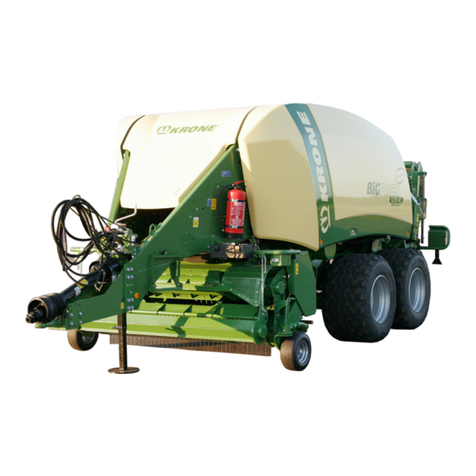
Krone
Krone Big Pack 1270 Original operating instructions
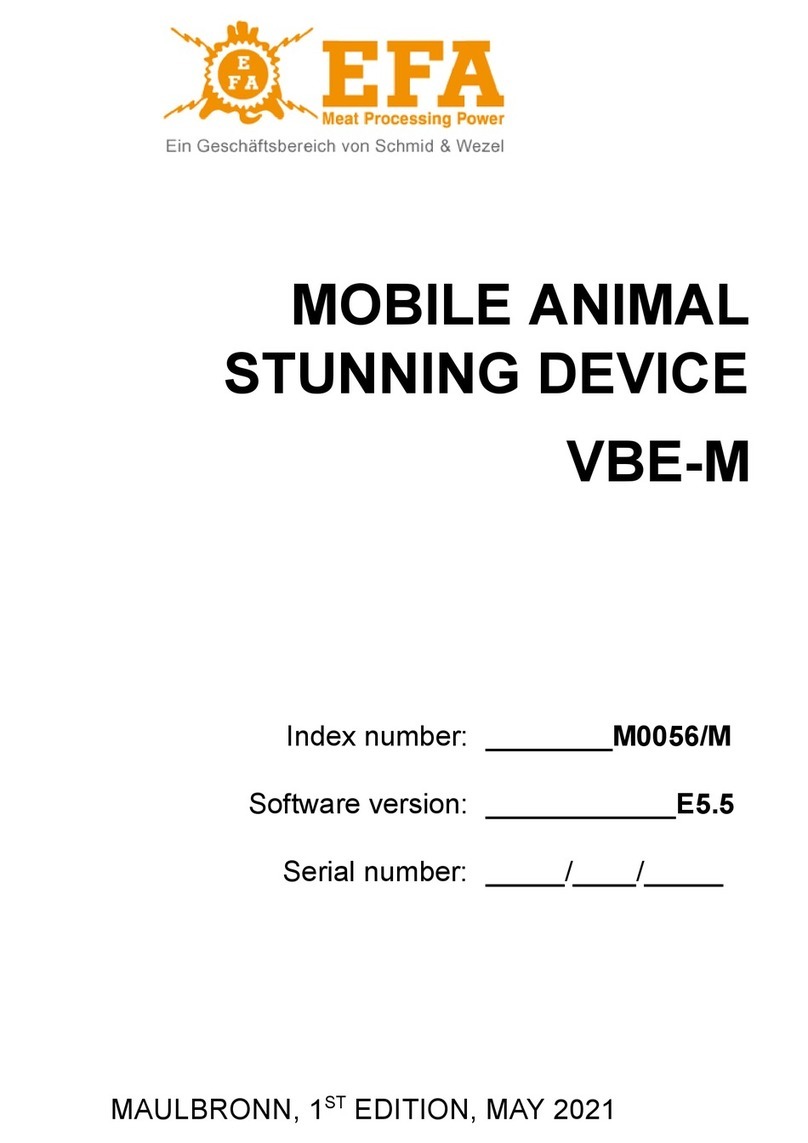
EFA
EFA VBE-M user manual

Schaffert
Schaffert Rebounder Mounting instructions
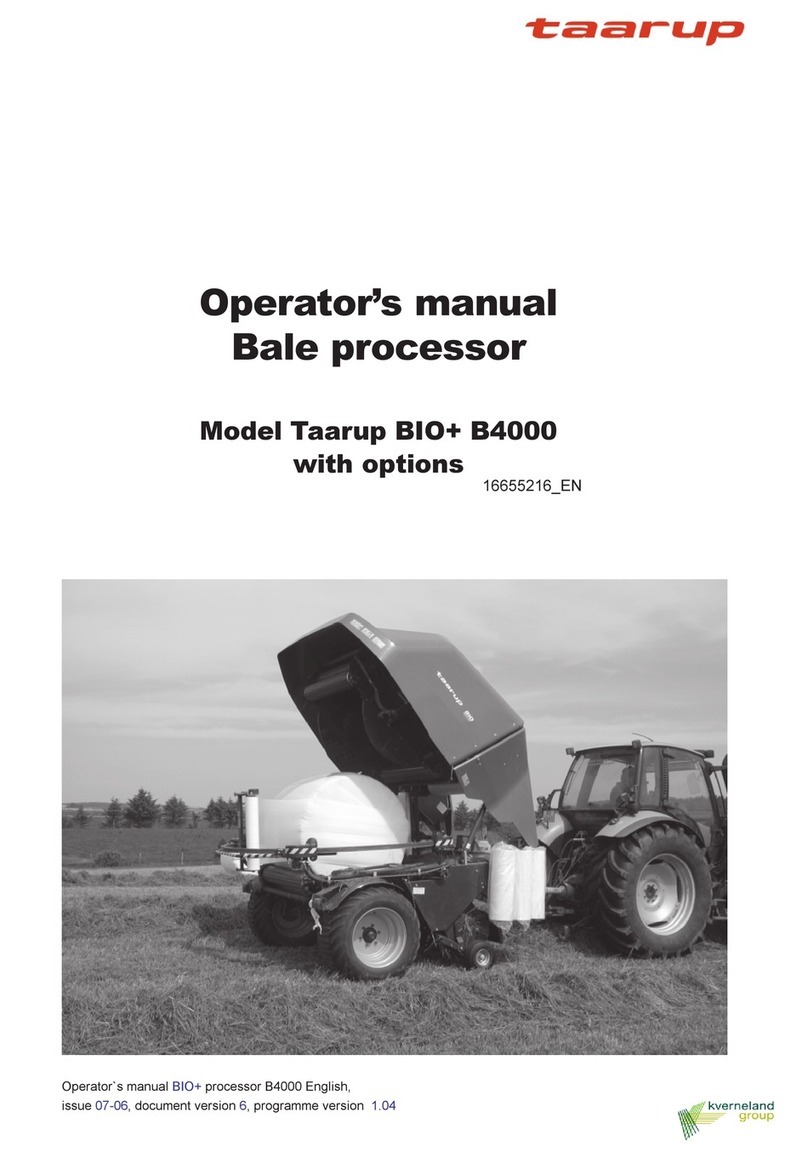
Taarup
Taarup BIO+ B4000 Operator's manual

GrainPro
GrainPro TRANSAFELINER MA3001RR0208-21 instruction manual
